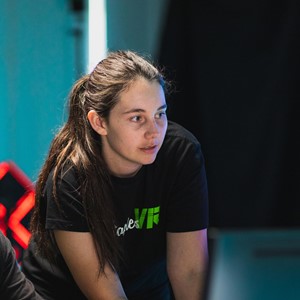Graphics & Games: A Sustained Symbiosis
Session Description:
This session focuses on the strong and continuing relationship between computer graphics and video games. This symbiotic relationship has clearly benefitted each of these important fields independently, and has had an undeniable impact on society as a whole. Early video game developers used interactive computer graphics to help them tell their stories, to create more-complete fantastical worlds, and to empower players to explore, create, and learn. These developers worked wonders with the limited capabilities of the hardware at their disposal, leading to many articles asking things like "How were they able to do that?"
While many of these "tricks" were gleaned from the hard work of computer graphics researchers, this was by no means a one-way street. Now-common techniques such as multitexturing can be traced back to early video games, such as Quake. The sheer volume of video games sales, in turn, led to the rapid increase in hardware support for ever-more-sophisticated graphical rendering, leading to more expressive video games, leading to more sales, and better tools...wash, rinse, and repeat.
Fast forward to today, where VR/AR/MR=XR is continuing this intricate dance. XR hardware is (slowly?) becoming more commonplace through mass production, bolstered by the continued maturation and malleability of tools, skills, delivery conduits, and consumption platforms, leading to a democratization of support for creativity. People can now produce and deliver visceral experiences to a mass market like never before. Come with us as we present a snapshot of this interesting and successful symbiosis of Graphics & Games.
Session Day and Time: 20 October 1:15pm-3:15pm
Format: Panel
Length: 90-120 minutes
Chair Bio:

Rob Lindeman (Professor and Director at the Human Interface Technology Lab NZ, University of Canterbury)
Rob Lindeman is Professor and Director at the Human Interface Technology Lab NZ (HIT Lab NZ) at the University of Canterbury. In a previous life, he was Director of a leading academic games program in the US. Rob's been struggling to make sense of VR since 1993.

Anthony Steed (University College London)
Anthony Steed is Head of the Virtual Environments and Computer Graphics group in the Department of Computer Science at University College London. He has over 25 years’ experience in developing virtual reality and other forms of novel user interface. He received the IEEE VGTC’s 2016 Virtual Reality Technical Achievement Award.

Krystal Paraone (StaplesVR)
Krystal Paraone is the studio manager and lead game developer at StaplesVR, a multidisciplinary creative technology company based in Auckland. She works as a generalist in skillsets and technology with years of experience developing for a wide range of industries and audiences.

Amber Taylor (Ara Journeys)
Ngāti Whātua, Te Rarawa, Ngapuhi, Tainui, Ngāti Mutunga, Te Āti Awa
Amber Taylor is Co-Founder and CEO of ARA Journeys, a mobile gaming company that blends the digital world with te taiao and te ao Māori. Inspired by and drawing on mātauranga Māori, ARA’s award-winning games use immersive technologies (AR, VR, MR) and artificial intelligence (AI) to promote connection, education, and exploration. Amber is an advocate for growing Māori and Pasifika talent and diversity in the tech sector.
Amber is a business mentor with NZ Business Mentor Association, Auckland Regional Ambassador for National Digital Forum (Ministry for Culture & Heritage), member of the Young Business Leaders Initiative with Ministry for Foreign Affairs & Trade, and NZ scout for USA Female Founded Club.

